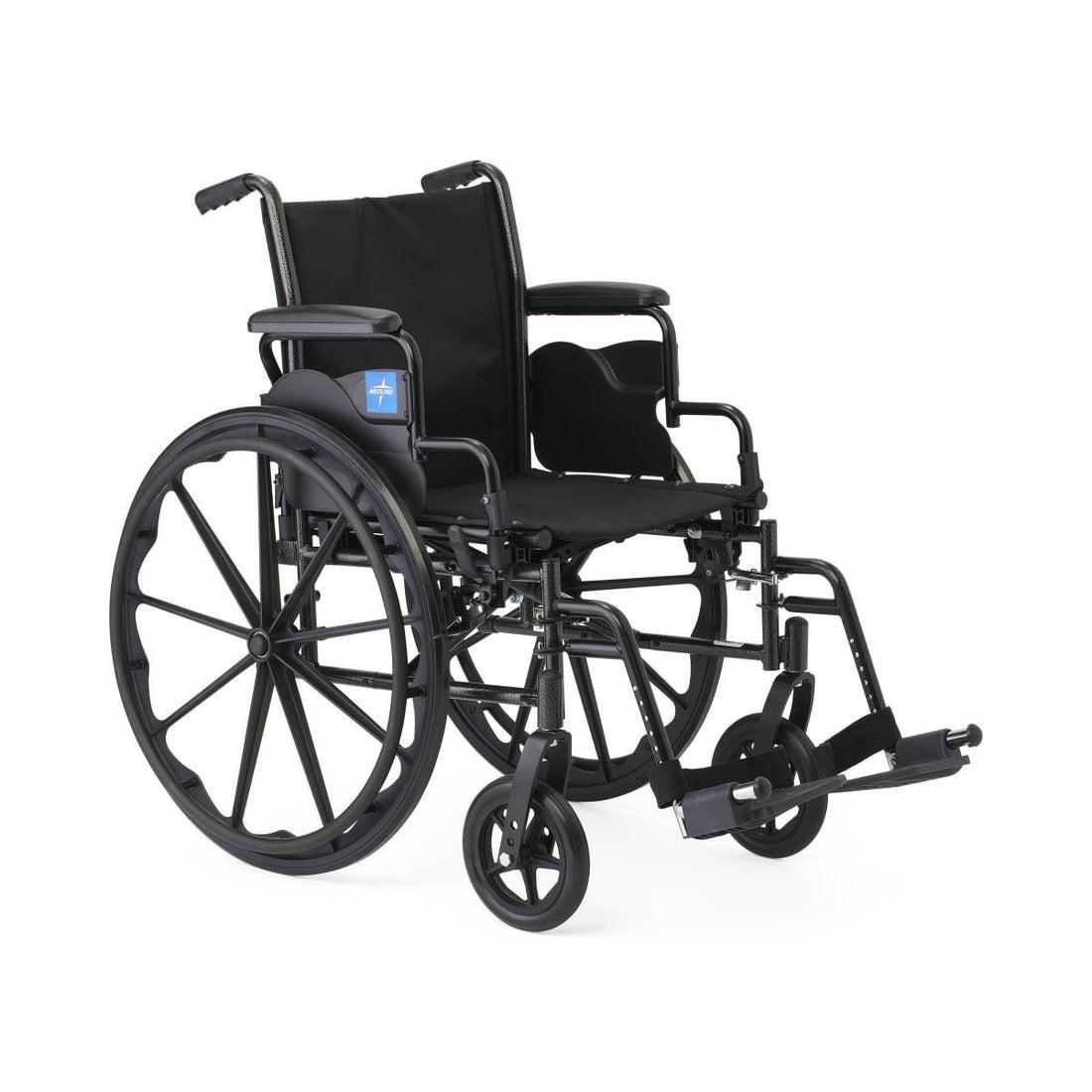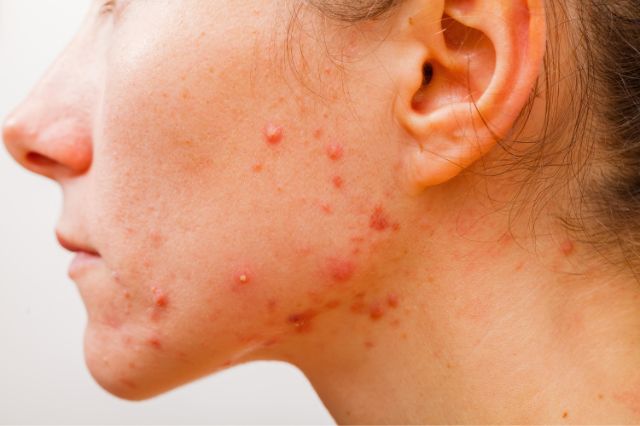Health
The Comprehensive Guide to Why Measuring Testosterone Matters

Testosterone plays a pivotal role in various aspects of both men’s and women’s health. Beyond its association with masculinity, testosterone influences a range of physiological functions, from bone density and muscle mass to libido and mood.
The decision to measure testosterone levels is not just a diagnostic tool; it’s a proactive step toward understanding and optimizing overall well-being.
In this comprehensive guide, we delve into the intricacies of why measuring testosterone matters.
Maintaining Bone Density
Beyond its role in physical appearance, testosterone is crucial for maintaining bone density. Optimal levels of testosterone contribute to robust bone health and help prevent conditions such as osteoporosis. As individuals age, the gradual decline in testosterone levels may lead to a reduction in bone density, making regular monitoring a proactive measure for skeletal well-being.
Muscle Mass and Strength
Testosterone is a key player in the development and maintenance of muscle mass. Adequate levels of testosterone support muscle protein synthesis, allowing individuals to build and sustain lean muscle.
This is not only important for physical strength and endurance but also for overall metabolic health. Monitoring testosterone levels is particularly relevant for those engaged in physical activities and strength training.
Libido and Sexual Function
Testosterone is a vital contributor to sexual health and function in both men and women. It fuels the libido or sex drive, ensuring a healthy interest in sexual activity.
In men, testosterone is also crucial for achieving and maintaining erections. A testosterone blood test becomes a proactive approach for addressing issues related to sexual function and ensuring a satisfying and fulfilling sex life.
Mood and Cognitive Function
Testosterone doesn’t merely influence physical attributes; it also plays a significant role in mood and cognitive function. Low testosterone levels have been associated with symptoms of fatigue, irritability, and even depression. Regular monitoring of testosterone levels can be a proactive step toward identifying hormonal imbalances that may impact mental well-being.
Energy Levels and Vitality
Optimal testosterone levels contribute to overall energy levels and vitality. Individuals with sufficient testosterone often report higher energy levels, improved focus, and greater well-being. Monitoring testosterone becomes crucial when individuals experience unexplained fatigue or a persistent lack of energy, allowing for timely interventions to restore vitality.
Weight Management
Testosterone is involved in regulating body composition, including fat distribution. Low testosterone can lead to more body fat, particularly around the abdomen. Monitoring testosterone levels can be beneficial for individuals struggling with weight management, offering insights into potential hormonal imbalances that may impact body composition.
Addressing Hormonal Imbalances
Imbalances in hormones, such as low testosterone levels, can affect health extensively. These imbalances may play a role in various symptoms and health issues in both men and women. Consistent monitoring of testosterone levels enables healthcare professionals to recognize and manage hormonal imbalances, offering individuals the chance to restore hormonal equilibrium.
Health Indicators for Men and Women
While testosterone is traditionally associated with men, it also plays a crucial role in women’s health. Women also produce testosterone, albeit in smaller amounts. Monitoring testosterone levels in women is essential for understanding hormonal balance, supporting bone health, and addressing issues related to libido and mood.
Fertility and Reproductive Health
In men, testosterone is intricately linked to fertility. Sufficient testosterone levels are necessary for the production of healthy sperm. Monitoring testosterone becomes a pertinent consideration for individuals or couples seeking to optimize reproductive health and address potential fertility issues.
Transitioning Through Life Stages
Throughout life, testosterone levels undergo natural fluctuations. Adolescence, adulthood, and aging all bring distinct changes in hormonal production. Monitoring testosterone levels allows individuals to navigate these life stages with awareness, addressing specific health needs at different points in their journey.
Precision in Hormone Replacement Therapy
For individuals undergoing hormone replacement therapy (HRT), precision in adjusting testosterone levels is paramount. Regular monitoring ensures that HRT is tailored to individual needs, optimizing the benefits while minimizing potential side effects. This precision is especially critical in addressing age-related declines or specific health conditions requiring hormonal support.
Optimizing Overall Well-Being
In essence, measuring testosterone levels is about optimizing overall well-being. It goes beyond addressing specific symptoms and becomes a proactive approach to understanding and enhancing one’s health.
By staying attuned to hormonal balance, individuals can make informed lifestyle choices, implement targeted interventions, and take charge of their physical and mental vitality.
Conclusion
Measuring testosterone levels emerges as a cornerstone in the journey towards health and vitality. It offers a window into the intricate interplay of hormones that govern various aspects of physical and mental well-being.
As a proactive step, regular monitoring allows individuals to identify potential imbalances, address symptoms, and optimize their health through informed choices and, when necessary, targeted interventions.
Whether navigating the nuances of sexual health, sustaining energy levels, managing weight, or addressing mood and cognitive function, the comprehensive benefits of measuring testosterone contribute to a holistic approach to health.Top of Form
Health
How to Combat Loneliness With Thoughtful Gestures


It’s tough to know the right thing to do when you have a friend or family member experiencing loneliness. Perhaps they lost a loved one or went through a breakup. Or maybe they recently moved to a new place and haven’t made friends yet.
Then again, they could be more introverted and prone to feelings of loneliness. In any event, you want to be there for them, but you just don’t know how. Here are some thoughtful gestures to try.
Send Gifts
Gift baskets are rarely a bad idea when it comes to any kind of pain, loss, suffering, or discomfort. Loneliness can lead to great sadness and even, over time, depression, which only feels more isolating.
Once you’re in that cycle, it’s hard to break free, and sometimes you need an outside force to shake you up. The arrival of a physical gift meant to be bright and cheery can be just that necessary force.
A gift basket is ideal for combating loneliness because it can be personalized to the tastes and interests of the recipient. You can build the basket yourself, taking the time to pick out items your loved one will appreciate.
If you don’t have time for that, many companies offer get well gift baskets that can be tailored to your needs. Either way, the arrival of this thoughtful gesture is sure to make anyone feel less alone.
Pick Up the Phone
It sounds crazy in this age of texts and emails, but a phone call can go a long way toward making a person feel loved. Part of feeling lonely includes a lack of love and comfort from others.
Many people who feel secure in their relationships can go days, weeks, and even months living by themselves and not needing the company of others. In contrast, those who don’t have those bonds, or who are new to independence, might suffer more.
You can help someone suffering in this way by picking up the phone. If you know your friend or family member is someone who doesn’t typically answer, text them in advance to let them know you want to talk.
Then, when you get them on the phone, have a conversation like you would if you were sitting together in a cafe. Don’t focus on the person’s loneliness unless they bring it up. Just gossip and share funny stories to lighten the mood and lift their spirits.
Plan to Hang Out
Speaking of sitting together in a cafe, if you live close to the person, plan a hangout session! It might seem obvious, but so many people are so busy these days, so you sympathize with someone’s plight but you shrug off the actual solution.
You can combat loneliness by spending time together. Friendship and community are beneficial to your overall health, too, so you’re doing something good for both of you.
Ask your loved one what they would like to do and then plan accordingly. If they can’t answer that question, take the matter into your own hands. Schedule a morning walk, which will boost endorphins and make you both happier.
Plan a trip to a local cafe for coffee and pastries. Or just bring snacks, magazines, and desserts over to their house and crash on their couch watching reality TV together. The idea is to combat loneliness with togetherness.
Pay for a Class
Another option if you’re physically close to each other is to take a class together. Classes are typically community-based as the people involved have a shared interest. They’re a great way to bring people together, discuss the topic at hand, and foster new friendships.
It’s also just an opportunity to get out of your house and be around other people. You get bonus points if the class is yoga or some other form of exercise that will boost happiness chemicals in your brain.
Even if you’re not close to your friend or family member, you can pay for a class you know they would like. During one of your chatty phone calls, you can pick their brain about their interests.
In most cities, you can find classes for just about anything. Pottery, paint and sip, writing, and more are offered at community centers and local studios. Get your friend a pass for a few classes and then check in on how it’s going.
Respond
Finally, and perhaps most obviously, one of the best things you can do for a friend who’s struggling with loneliness is to respond. So many people are so caught up in their own lives that they often don’t pick up on the subtle distress signals others are sending.
It’s so easy to leave someone on “read” and not get back to them for days or weeks. Of course, it’s not personal, but it can be detrimental to their state of mind.
You don’t have to send back a book-length text. Just respond when you see the text with something like, “Hey! I’m super busy right now. Let’s plan a call/walk/coffee date for this weekend!” Let the person know you see them, you hear them, and you’re here for them.
Just that quick, 30-second text can keep someone from feeling like they’re alone in this big, busy world. Then, be sure to follow up.
Again, there’s no perfect way or right way to help someone combat loneliness. And you might be struggling with your issues, too, so don’t take this situation on as a burden. Instead, see reaching out, sending a gift basket, or planning a morning walk as beneficial to your health.
Community, friendship, and good deeds are all contributors to feeling better about your life in general. And you’ll be helping someone else out along the way.
Health
Wheelchairs: Types, Functions, Advantages, and Recommendations for Choosing


Wheelchairs are an essential means of transportation for people with disabilities, helping them maintain mobility, independence, and improve their quality of life. They provide comfort and convenience in everyday life, allowing users to be active and independent.
Let’s explore the different types, functions, and advantages of wheelchairs, and provide recommendations on how to choose the right one.
Types of Wheelchairs
There are several types of wheelchairs, each with its own characteristics and purpose:
1. Mechanical.
Mechanical or manual wheelchairs are propelled by the user or an assistant. They are simple in design, lightweight and affordable.
Advantages:
- Light weight.
- Easy to use and maintain.
- Relatively low cost.
- Do not require power supply.
Disadvantages:
- Require physical effort to move.
- Limited speed and range of movement.
- Not suitable for people with limited hand strength.
2. Electric.
Equipped with a motor and controlled by a joystick or remote control. They are suitable for people with disabilities who cannot move the wheelchair on their own.
Advantages:
- Easy to operate.
- Ability to travel long distances.
- High level of comfort and support.
- Suitable for users with reduced mobility.
Disadvantages:
- High cost.
- The need for regular battery charging.
- Large weight and dimensions.
3. Sports.
Sports wheelchairs are designed for active users who play sports or lead an active lifestyle. They have a lightweight and durable design, with special wheels and accessories to improve maneuverability and speed.
Advantages:
- Lightness and maneuverability.
- Strength and durability.
- Suitable for an active lifestyle.
Disadvantages:
- High cost.
- Not always suitable for everyday use.
4. Children’s.
Children’s wheelchairs are specially designed for young users with disabilities. They take into account children’s physiological characteristics and provide a high level of comfort and safety.
Advantages:
- Adaptation to the needs of children.
- Adjustable components for child growth.
- High level of comfort and safety.
Disadvantages:
- Limited period of use due to the child’s growth.
- High cost of specialized models.
5. Wheelchairs for an active lifestyle.
Designed for users who lead an active lifestyle despite physical limitations, including work, travel, and sports. They combine lightness, maneuverability, and comfort.
Advantages:
- High maneuverability and lightness.
- Suitable for an active lifestyle.
- Convenient for traveling.
Disadvantages:
- May be less comfortable for prolonged use.
- High cost.
You can find a wide range of wheelchairs from world-famous brands: https://medsupplycart.com/
Functions of Wheelchairs
They perform several important functions that help users maintain independence and improve their quality of life:
- Mobility. Their main function is to ensure the mobility of the user, allowing them to move around at home, at work, and on the street.
- Support. They provide the necessary support for people with disabilities, helping them maintain proper posture and avoid injury.
- Comfort. They provide comfort through ergonomic design, adjustable seats and backrests, and additional accessories such as armrests and footrests.
- Independence. Wheelchairs help users maintain their independence, allowing them to perform daily tasks and engage in social activities independently.
Advantages of Wheelchairs
Wheelchairs have several advantages that make them indispensable for people with disabilities:
- Improved quality of life. They help users lead an active lifestyle, participate in social activities, and maintain independence.
- Reducing physical activity. They reduce the physical load on a person with disabilities, allowing them to move around effortlessly.
- Improved safety. Ensure user safety by helping to avoid falls and injuries.
- Comfort and support. Provide comfort and support, helping to maintain proper posture and avoid pain and discomfort.
Recommendations for Choosing a Wheelchair.
- Identification of needs. Before choosing a wheelchair, it is important to identify your needs and requirements. Consider your lifestyle, activity level, physical abilities, and medical needs.
- Consultation with a specialist. Consult your doctor or rehabilitation specialist. They can help you determine which type of wheelchair is best for your needs.
- Read reviews and ratings. Read reviews and ratings of different models. This will help you find a reliable and comfortable wheelchair that meets your needs.
- Test the wheelchair. Be sure to try it out before you buy. Make sure it is comfortable, easy to operate, and meets your needs.
- Warranty and service. Check the warranty terms and availability of service centers in your area. This will ensure timely repairs and maintenance.
Wheelchairs are an important means of transportation for people with disabilities. They help maintain mobility, independence, and improve quality of life. Choosing the right wheelchair depends on the needs and requirements of the user, as well as the conditions in which it will be used. Consultation with a specialist, reading reviews and testing will help you make the right choice and ensure maximum comfort and support.
Beauty
How to Test for Acne


Acne is the most common skin issue in the United States, affecting an estimated 50 million people. Although most prevalent in teenagers and adolescents, adult acne is a problem affecting men and women throughout their adult lives.
So, how do you know if you suffer from acne, and how do you find out what is causing it? Let’s take a closer look.
What is acne?
Acne is a skin condition that predominantly leads to spots and oily skin. It most typically occurs on the face, back, and chest. Acne is often linked to a change in hormone levels during puberty but can start at any age.
Some people only experience mild symptoms of acne that do not require treatment, whereas others struggle with more severe issues.
What are the main symptoms of acne?
Although everyone’s skin is different, some of the most common symptoms of acne are:
- Crusting of skin bumps
- Cysts
- Papules (small, red bumps)
- Pustules (small, red bumps that contain white or yellow pus)
- Redness around skin eruptions
- Scarring of the skin
- Whiteheads
- Blackheads
The symptoms of acne most commonly occur on the face, although they can also manifest themselves on the shoulders, back, arms, chest, and buttocks.
How is acne diagnosed?
If you suspect that you may have acne, you can make an appointment with your doctor, who will be able to give you an official diagnosis. In most cases, they can do this simply by examining the skin without the need for any testing.
Alternatively, you could book an appointment with a dermatologist, although this is unlikely to be covered by your health insurance.
What tests are available for acne?
If you struggle with chronic acne and would like to find out more about what is causing your skin to break out, you might want to consider requesting a blood test for acne.
Although this can be carried out by your doctor, it would be better to work with dermatologists and skin experts who can administer an in-depth test to see what is going on underneath the surface of your skin.
There are lots of different biomarkers that can be checked to see what is causing the acne on your skin, such as:
- Blood glucose
- Kidney function
- Electrolytes
- Inflammation
- Vitamins and minerals
- Liver function
- Thyroid
- Hormones including testosterone, estrogen and progesterone
- Gallbladder function
It is highly unlikely that your doctor will check all these elements of your health when doing a blood test as it is expensive to do. However, this can leave you with even more unanswered questions. However, when you undergo full testing, you can find the root cause of your acne and make any necessary changes to your lifestyle, diet, and skincare routine.
You can order acne health skin care home test kits that are delivered directly to your doorstep, which require you to take a sample and post it back to the lab. Alternatively, if you do not feel comfortable doing this, you can make an appointment with a private clinic.
What triggers acne outbreaks?
There are lots of things that can trigger an acne breakout, including:
- Hormonal changes such as puberty, menstrual periods, pregnancy, birth control pills, and menopause.
- Certain medications, such as steroids and testosterone.
- Birth control devices such as drug-containing IUDs.
- Excessive touching of the skin.
Although many people believe that a poor diet can contribute to spots, there is little evidence to suggest that eating sugary foods such as chocolate and candy causes spots.
What are the best treatments for acne?
Depending on the severity of your symptoms, there are several treatment options available. For mild cases, it can be a good idea to start with a good skincare regime that includes cleansing, moisturizing and gentle exfoliation.
For more stubborn spots and blemishes, over-the-counter treatments that contain salicylic acid or benzoyl peroxide can be effective. However, these can cause redness, drying, or excessive peeling of the skin in some people.
Lastly, for those who have severe symptoms of acne, there are several treatments that your doctor may be willing to prescribe, such as oral and topical antibiotics and prescription formula sulfur, resorcinol or salicylic acid.
Final thoughts
Acne, both in adolescence and adulthood, can have a seriously detrimental effect on your self-esteem. Fortunately, you do not need to suffer in silence as there are tests and treatments available, with options for all ages and skin types.
-



 Captions3 years ago
Captions3 years ago341 Sexy Captions to Fire Up Your Instagram Pictures
-



 Captions3 years ago
Captions3 years ago311 Night Out Captions for Instagram and Your Crazy Night
-



 Captions3 years ago
Captions3 years ago245 Saree Captions for Instagram to Boost Your Selfies in Saree
-



 Captions3 years ago
Captions3 years ago256 Best Ethnic Wear Captions for Instagram on Traditional Dress
-



 Captions3 years ago
Captions3 years ago230 Blurred Picture Captions for Instagram
-



 Captions3 years ago
Captions3 years ago275 Deep Captions for Instagram to Express Your Thoughts
-



 Quotes3 years ago
Quotes3 years ago222 Nail Captions for Instagram to Showcase Your Fresh Manicure
-



 Captions3 years ago
Captions3 years ago211 Laughing Captions for Instagram | Laughter Is the Best Medicine







